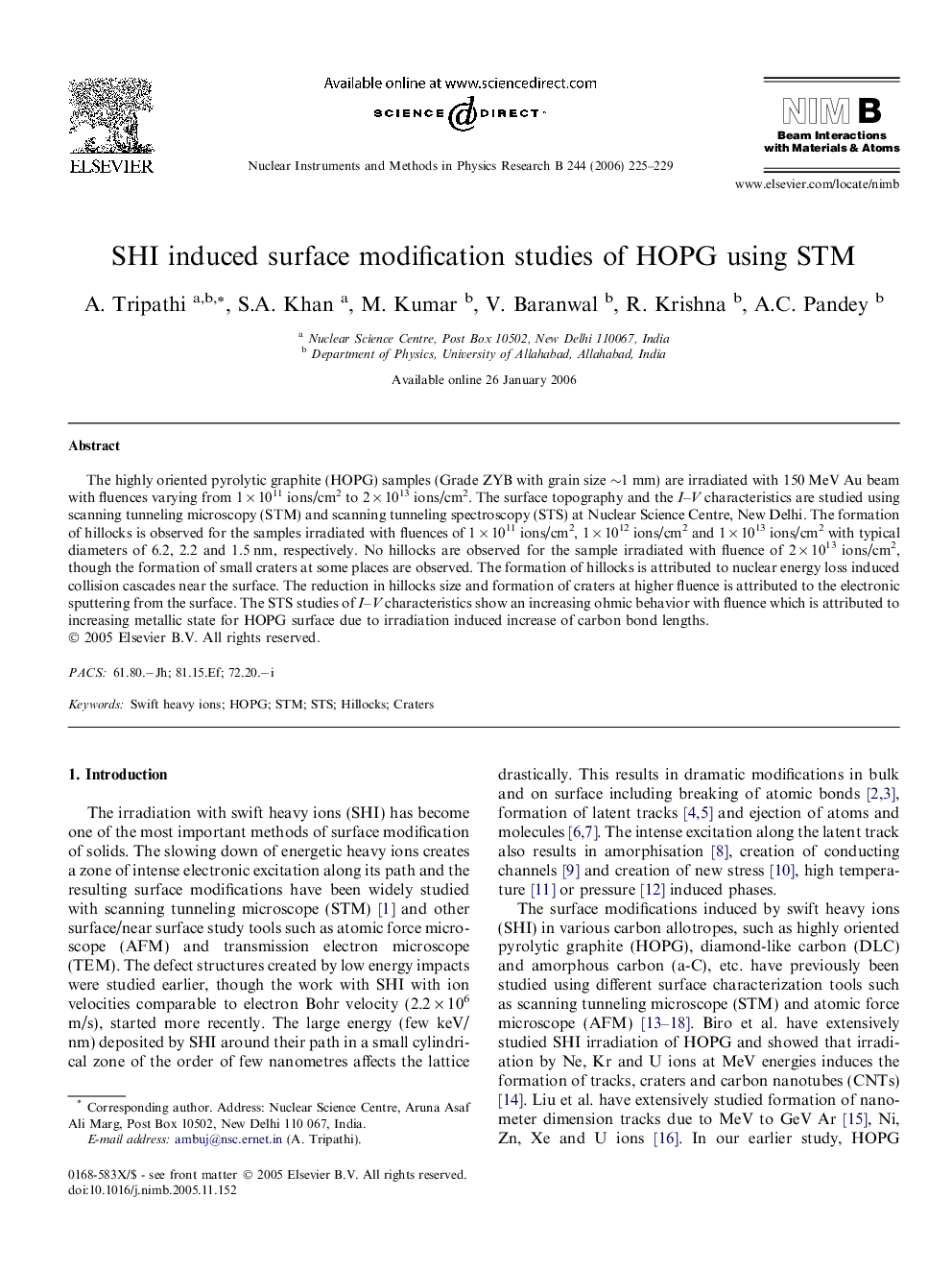| Article ID | Journal | Published Year | Pages | File Type |
|---|---|---|---|---|
| 1687355 | Nuclear Instruments and Methods in Physics Research Section B: Beam Interactions with Materials and Atoms | 2006 | 5 Pages |
The highly oriented pyrolytic graphite (HOPG) samples (Grade ZYB with grain size ∼1 mm) are irradiated with 150 MeV Au beam with fluences varying from 1 × 1011 ions/cm2 to 2 × 1013 ions/cm2. The surface topography and the I–V characteristics are studied using scanning tunneling microscopy (STM) and scanning tunneling spectroscopy (STS) at Nuclear Science Centre, New Delhi. The formation of hillocks is observed for the samples irradiated with fluences of 1 × 1011 ions/cm2, 1 × 1012 ions/cm2 and 1 × 1013 ions/cm2 with typical diameters of 6.2, 2.2 and 1.5 nm, respectively. No hillocks are observed for the sample irradiated with fluence of 2 × 1013 ions/cm2, though the formation of small craters at some places are observed. The formation of hillocks is attributed to nuclear energy loss induced collision cascades near the surface. The reduction in hillocks size and formation of craters at higher fluence is attributed to the electronic sputtering from the surface. The STS studies of I–V characteristics show an increasing ohmic behavior with fluence which is attributed to increasing metallic state for HOPG surface due to irradiation induced increase of carbon bond lengths.
